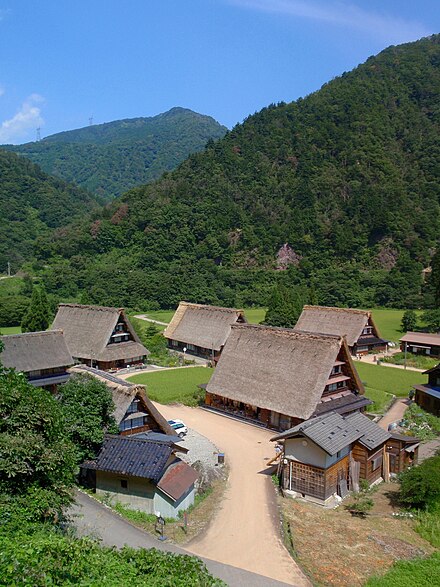Gokayama - heritage Listed area in Toyama Prefecture, Japan

Understand
Gokayama is famous for its farmhouses, which are built in a unique architectural style known as gasshō (合掌). The name means "hands together" as in prayer, referring to the steep roofs that keep the snow off in the winter. Underneath the roofs, the large attic area was used to house silkworms.
The kanji of the current name mean "Five Mountains", but the original name is actually "Between Five Valleys" (五箇谷間), which is pronounced the same.
Get in
There are no train stations in Gokayama, but there are buses. From Toyama Prefecture, the "world heritage bus" runs from JR Johana Station (40 min) or Takaoka station (90 min, ¥1,800). From Gifu Prefecture, there are buses from Shirakawa-go that connect fairly well with the buses that come from Takayama. There are also direct buses from Kanazawa. Some of the buses do not operate in the winter.
Get around
See
- Suganuma Gasshōzukuri Village (菅沼合掌造り集落).
Do
Buy
Eat
Drink
Sleep
Gokayama offers numerous ryokan based Japanese inns for overnight stays. Most of these inns are gasshō-based inns and offer both dinner and breakfast in the accommodation fee. Dinner is generally traditional Japanese dishes consisting of river fish and mountain vegetables; you will almost certainly sleep on a futon on a tatami mat.
Go next
Stay safe
Just like the better known Shirakawa-go, Gokayama's buildings are mainly produced of highly flammable traditional materials, the village has a no-smoking policy. There is a smoking area in the village (indicated by bench seats, a sign and a 3-foot-high large ash tray).
Although this is a moderately popular tourist destination, some people do live in some of the traditional houses. Keep this in mind as you tour.
Go next
Nanto Shi
2nd-order administrative division
Toyama Prefecture
Primary administrative division